Overview
We recognize that user engagement is paramount in today’s competitive mobile landscape. An integrated mobile app is not just a luxury; it’s an essential tool that can significantly elevate user interaction. Key features such as real-time monitoring, user authentication, personalization, and gamification are critical in this regard. Evidence shows that these elements not only enhance user satisfaction but also improve retention rates and overall interaction metrics. This underscores the necessity of a well-integrated approach in mobile app development.
Furthermore, consider how these features can transform your application’s performance.
- Real-time monitoring allows us to adapt to user needs instantaneously.
- Robust user authentication ensures a secure experience.
- Personalization caters to individual preferences, making users feel valued.
- Gamification adds an engaging layer that keeps users coming back.
These strategies are not merely theoretical; they are backed by data that demonstrates their effectiveness in fostering loyalty and satisfaction.
As a result, we urge you to explore the integration of these essential features in your mobile app. By doing so, you position yourself at the forefront of user engagement, ensuring that your app meets and exceeds the expectations of your audience. Let’s work together to create an experience that captivates users and drives success.
Introduction
In today’s digital landscape, where user engagement is paramount, we present Avato’s hybrid integration platform as a game-changer for businesses striving to connect disparate systems and enhance user experiences. By seamlessly bridging legacy systems with modern technologies, our innovative platform empowers developers to create mobile applications that not only meet user expectations but exceed them.
As organizations increasingly recognize the importance of integrating mobile applications with existing systems, the demand for such hybrid solutions continues to grow. With features like real-time monitoring, robust user authentication, and personalized experiences, our platform is designed to drive user satisfaction and retention. This ensures that businesses remain competitive in an ever-evolving market.
What’s holding your team back from achieving this level of integration? Let us partner with you to elevate your user experience.
Avato’s Hybrid Integration Platform: Seamless Connectivity for Enhanced User Engagement
At Avato, we recognize that in today’s fast-paced digital landscape, the ability to integrate diverse systems and data sources is not just beneficial; it is essential. Our hybrid integration platform empowers companies to create an integrated mobile app that delivers exceptional experiences for individuals. By bridging legacy systems with modern technologies, we ensure continuous access to information and services, significantly enhancing engagement. Our platform accommodates a variety of integration scenarios, enabling developers to craft solutions that are not only functional but also highly responsive to client needs.
Key features of our platform include real-time monitoring and alerts, which are vital for maintaining optimal system performance and reliability. In an era where expectations for seamless connectivity are at an all-time high, this capability stands out. The hybrid integration platform market is projected to grow at a CAGR of 12.5% until 2033, and organizations are increasingly recognizing the importance of integrating applications with existing systems to boost engagement. Recent trends indicate a shift towards prioritizing seamless connectivity in app development, as businesses strive to enhance satisfaction and retention. Successful app integrations utilizing hybrid platforms have demonstrated substantial improvements in interaction metrics. For instance, case studies reveal that companies leveraging Avato’s platform have effectively navigated complex integration challenges, resulting in enhanced client experiences and operational efficiencies. A notable example is the Basler Web Market Intelligence Collaboration, where our meticulous approach was commended, leading to a lasting partnership for future market intelligence needs.
Industry leaders emphasize that seamless connectivity is a critical factor in application development and engagement. As the Marketing Director at Philips Healthcare articulated, ‘The study was customized to our targets and needs with well-defined milestones. We were impressed by the in-depth customization and inclusion of not only major but also minor players across the globe.’ This perspective underscores the pivotal role of Avato’s platform in elevating participant engagement. As organizations continue to embrace hybrid integration platforms, the focus on delivering an integrated mobile app will remain paramount, ensuring that individuals enjoy a seamless and responsive interaction across all touchpoints.

Real-Time Monitoring: Ensuring Optimal App Performance and User Satisfaction
Our integrated mobile app features real-time monitoring tools that empower us to track essential performance metrics, such as load times, crash reports, and user interactions. By leveraging robust analytics features, we can consistently monitor the performance of our hybrid systems, swiftly identifying and addressing issues to guarantee that our users experience a seamless and efficient app environment. This proactive approach not only enhances user satisfaction but also cultivates loyalty; users are more inclined to return to an app that consistently delivers high performance.
Statistics indicate that tools with effective monitoring can significantly enhance session length and frequency, with users engaging more frequently and for longer durations on platforms that operate reliably. Furthermore, expert insights underline that to achieve our business objectives, we must implement highly engaging and goal-oriented strategies. As Berkem Peker asserts, “To achieve target goals in terms of your business, you must provide highly engaging, well-performing, and goal-oriented strategies,” which are facilitated by continuous monitoring and robust performance metrics.
For example, throughput monitoring measures the number of requests our system can handle within a specific timeframe, offering insights into its capacity and scalability. This enables us to determine when additional resources or enhancements are necessary to maintain effective software performance. Moreover, monitoring dependency health is crucial as it supports system uptime by observing the status of critical dependencies, further enhancing customer satisfaction. As the landscape of smartphone software evolves, the importance of real-time monitoring tools in ensuring optimal performance and consumer satisfaction cannot be overstated.
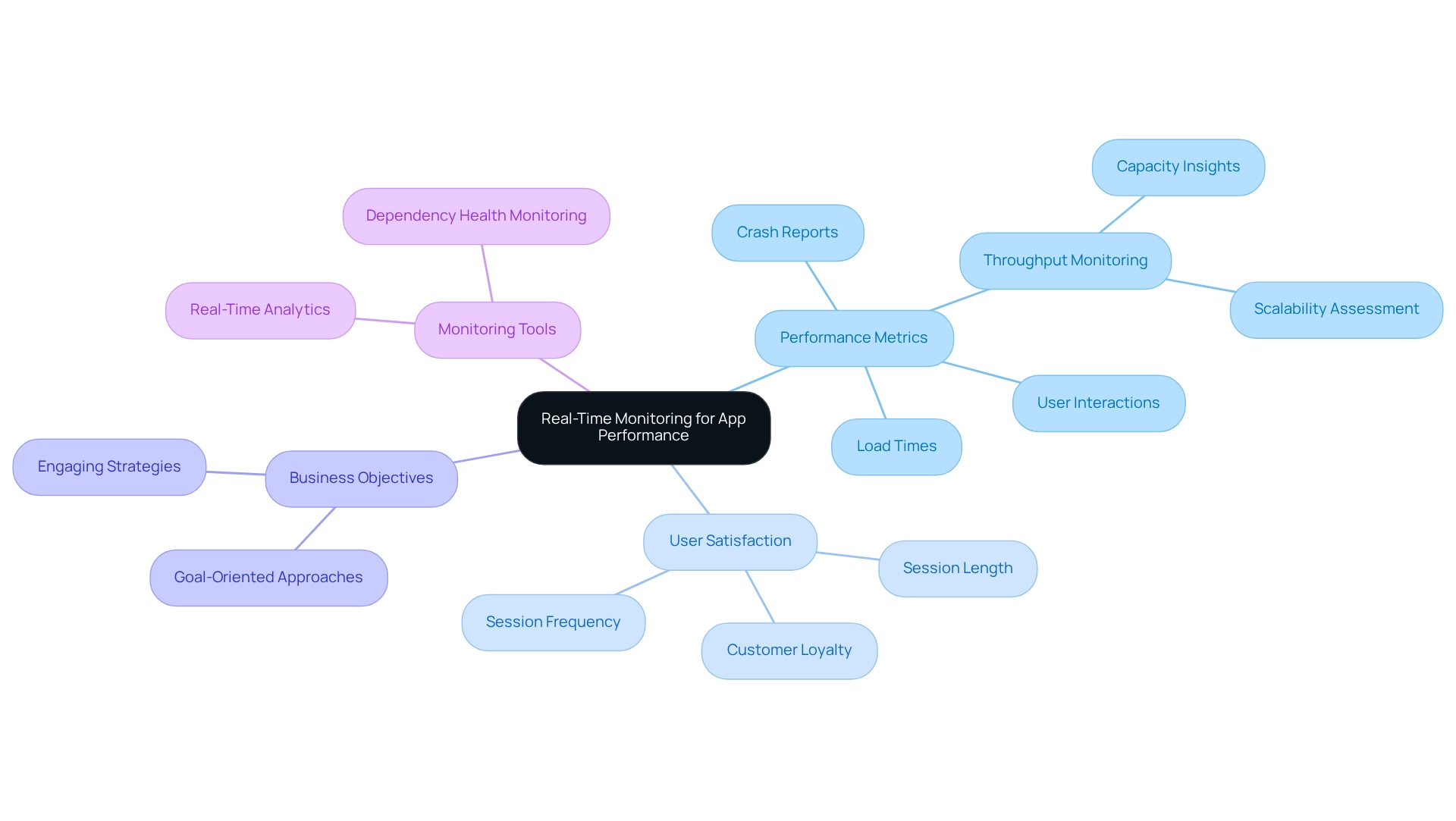
User Authentication: Building Trust and Security in Mobile Applications
Implementing robust client authentication methods, including multi-factor authentication (MFA) and biometric verification, is vital for fostering trust in integrated mobile apps, particularly within the banking sector. These security measures not only protect sensitive individual data but also significantly decrease the risk of unauthorized access. In fact, the adoption of MFA creates a multi-layered defense against potential breaches, enhancing overall security. As organizations increasingly recognize the importance of secure authentication, statistics reveal a concerning trend:
- While 38% of large organizations neglect MFA,
- A notable 62% of small to mid-sized organizations do adopt it.
This contrast highlights a critical area for improvement among larger entities.
The effect of efficient account authentication extends beyond security; it directly influences engagement and retention. When individuals feel secure while using the integrated mobile app for banking, they are more likely to engage with the platform regularly. This is particularly crucial in industries like banking and healthcare, where an integrated mobile app is paramount for building trust. Case studies indicate that sectors with better password hygiene, such as tech and media, outperform those like healthcare, which struggle with weak password practices. This disparity underscores the need for organizations in lower-performing sectors to prioritize MFA and robust password management strategies to enhance security.
Expert opinions further reinforce the necessity of these measures. Security experts stress that implementing phishing-resistant MFA techniques is crucial for safeguarding data and preserving trust. Mirren McDade notes, “This shift emphasizes the importance of adopting phishing-resistant MFA methods.” As we transition into 2025, trends suggest a rising focus on authentication, with smartphone software progressively incorporating sophisticated security elements such as biometrics. By adhering to best practices for secure application authentication, such as implementing MFA and biometric verification within our integrated mobile app, we can not only improve security but also establish lasting connections with our clients.

Personalization Features: Tailoring User Experiences to Boost Engagement
Personalization features are not just enhancements; they are essential for elevating interaction within mobile applications. By leveraging behavior and preferences, we can create tailored content suggestions and individual-specific interfaces that resonate with each user. This approach significantly boosts satisfaction, leading to longer app usage and markedly higher engagement rates. For example, personalized calls to action convert 202% better than standard ones, underscoring the power of customized interactions. Additionally, 56% of online customers prefer revisiting websites that offer product suggestions, further emphasizing the importance of personalization in retaining visitors.
Successful applications harness behavior data to refine their offerings, ensuring that content remains relevant and engaging. As Gustavo Schüler, a partner at McKinsey, aptly notes, “They also establish robust measurement processes that track the impact of customer interventions and feed that information back to their systems and teams.” As we approach 2025, integrating advanced personalization features will be vital for applications aiming to maintain user interest and loyalty, ultimately fostering sustained engagement and satisfaction.
Moreover, our dedicated hybrid integration platform enhances this process by delivering speed, security, and simplicity in integration. This allows organizations to maximize the potential of their legacy systems and significantly improve user experiences. With capabilities like data analytics and behavior tracking, we empower businesses to craft more personalized interactions, aligning with our mission to architect technology foundations that cultivate rich, connected customer experiences.
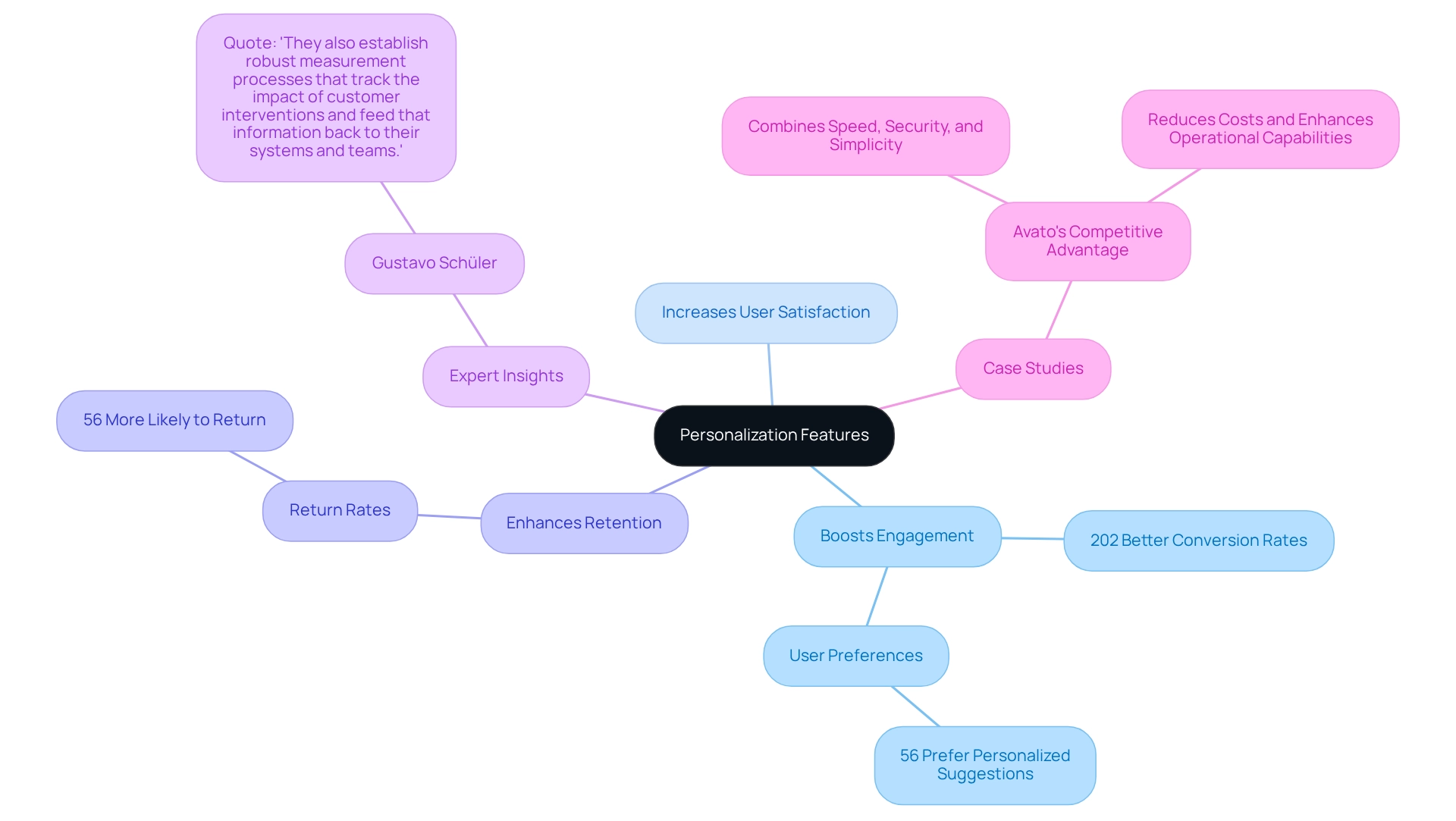
Push Notifications: Re-Engaging Users and Keeping Them Informed
Push notifications serve as a vital communication channel between mobile applications and their audience, enabling us to deliver timely updates and reminders directly to users. By tailoring these alerts to individual preferences and behaviors, we can significantly enhance interaction rates. For instance, notifications about upcoming events or personalized promotions can effectively encourage users to revisit banking applications, thereby boosting overall retention.
Statistics reveal that push notification campaigns featuring call-to-action (CTA) buttons achieve 40% to 60% better results, underscoring the power of strategic messaging. In 2025, push notification open rates for utility applications are projected to be 11.7% on Android and 9.9% on iOS, indicating substantial potential for engagement when notifications are crafted thoughtfully.
The financial services sector, in particular, boasts the highest opt-in rates for push notifications, ranging from 0.5% to 10%. This presents a unique opportunity for us to leverage push notifications to enhance client interaction. Marketing experts suggest that the optimal times to send push notifications are between noon and 1 PM and from 7 to 8 PM, highlighting the critical role of timing in maximizing engagement.
Case studies illustrate that effective push notification strategies can markedly improve user retention. For example, banking applications that implement customized alerts have reported significant increases in user engagement, demonstrating the direct correlation between personalized messaging and customer loyalty. By focusing on personalization and strategic timing, we can harness the full potential of push notifications to keep users informed and engaged, ultimately enhancing their overall experience.

Offline Functionality: Enhancing Usability and User Engagement
Offline functionality in mobile applications significantly enhances usability and engagement by providing access to essential features and content without an internet connection. This capability is particularly beneficial for individuals in remote regions or those facing connectivity challenges. By enabling offline access, we can greatly improve user engagement, ensuring that individuals remain connected to our app even when offline. Research shows that applications with offline capabilities experience a notable increase in retention rates, as they provide uninterrupted access to critical features regardless of internet availability.
The advantages of offline access extend beyond usability; they also foster satisfaction and loyalty among users. Applications designed with an offline-first strategy sync data only when necessary, allowing individuals to interact with the app without interruptions. This design philosophy not only enhances app performance but also reduces data consumption, making it a cost-effective solution for users. Moreover, our secure hybrid integration platform guarantees 24/7 uptime for essential integrations, thereby bolstering the reliability of offline functionalities in mobile applications.
Security remains a critical concern, particularly in the banking sector. As one expert noted, “You can use encryption and other security measures to protect sensitive data stored locally on the device.” This underscores the importance of safeguarding personal data, even in offline scenarios.
Case studies, such as ‘Advantages of Offline Capabilities in Mobile Apps,’ illustrate that integrating offline functionalities leads to improved customer loyalty and brand reputation. Applications that maintain user engagement without internet connectivity report higher satisfaction rates, as individuals appreciate the reliability of accessing features anytime, anywhere. By prioritizing offline features, we can ensure that we meet the evolving needs of our clients, ultimately fostering ongoing engagement and satisfaction.
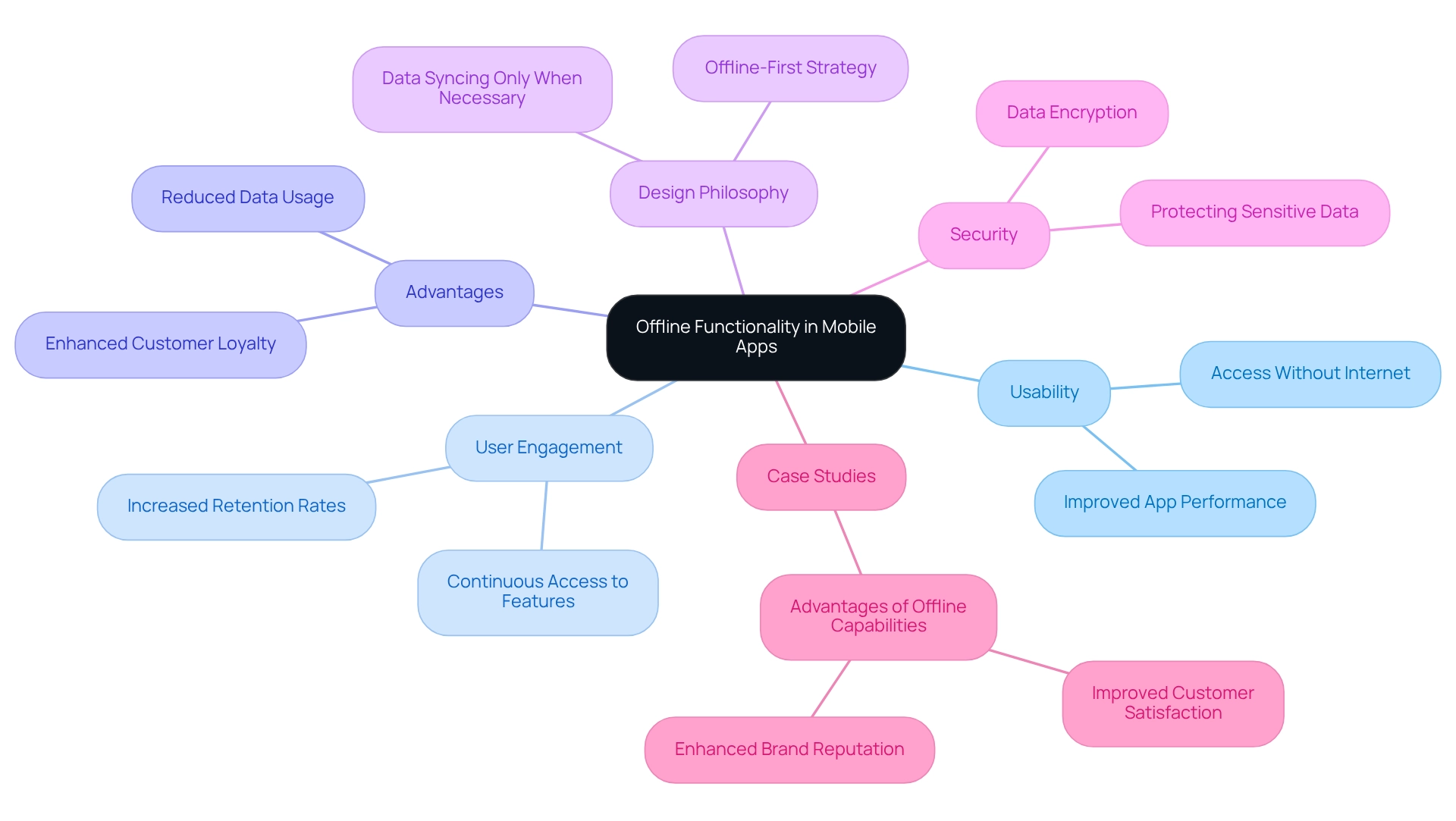
Analytics Integration: Leveraging User Data to Enhance Engagement
Incorporating analytics tools into mobile applications is essential for businesses aiming to gather and analyze data effectively. By understanding consumer behavior, preferences, and interaction patterns, we can make informed decisions regarding app features and enhancements. This data-driven approach not only allows us to personalize offerings to better meet client needs but also significantly boosts engagement and satisfaction.
For instance, companies utilizing customer data analytics have reported improved retention rates, with benchmarks indicating that optimized interaction strategies can effectively reduce churn. According to the conversion rate formula, (number of conversions / total visitors) x 100, we can quantify the effectiveness of our analytics integration.
Furthermore, case studies, such as the ‘Revenue Tracking’ study, illustrate that monitoring revenue generated by apps can uncover trends that inform strategic adjustments, ultimately maximizing profitability. As Gustavo Estrada noted, ‘Avato has the ability to simplify complex projects and deliver results within desired time frames and budget constraints,’ underscoring the practical advantages of analytics integration.
Our hybrid integration platform is dedicated to streamlining disparate systems, enabling us to unlock isolated assets and create substantial business value through seamless data integration. As we approach 2025, the integration of analytics in the integrated mobile app is becoming increasingly vital, with experts emphasizing its role in shaping user experiences and driving business success.
Additionally, App Retention Benchmarks aid product managers in enhancing user engagement and minimizing churn, making analytics integration a critical component of modern app strategies.
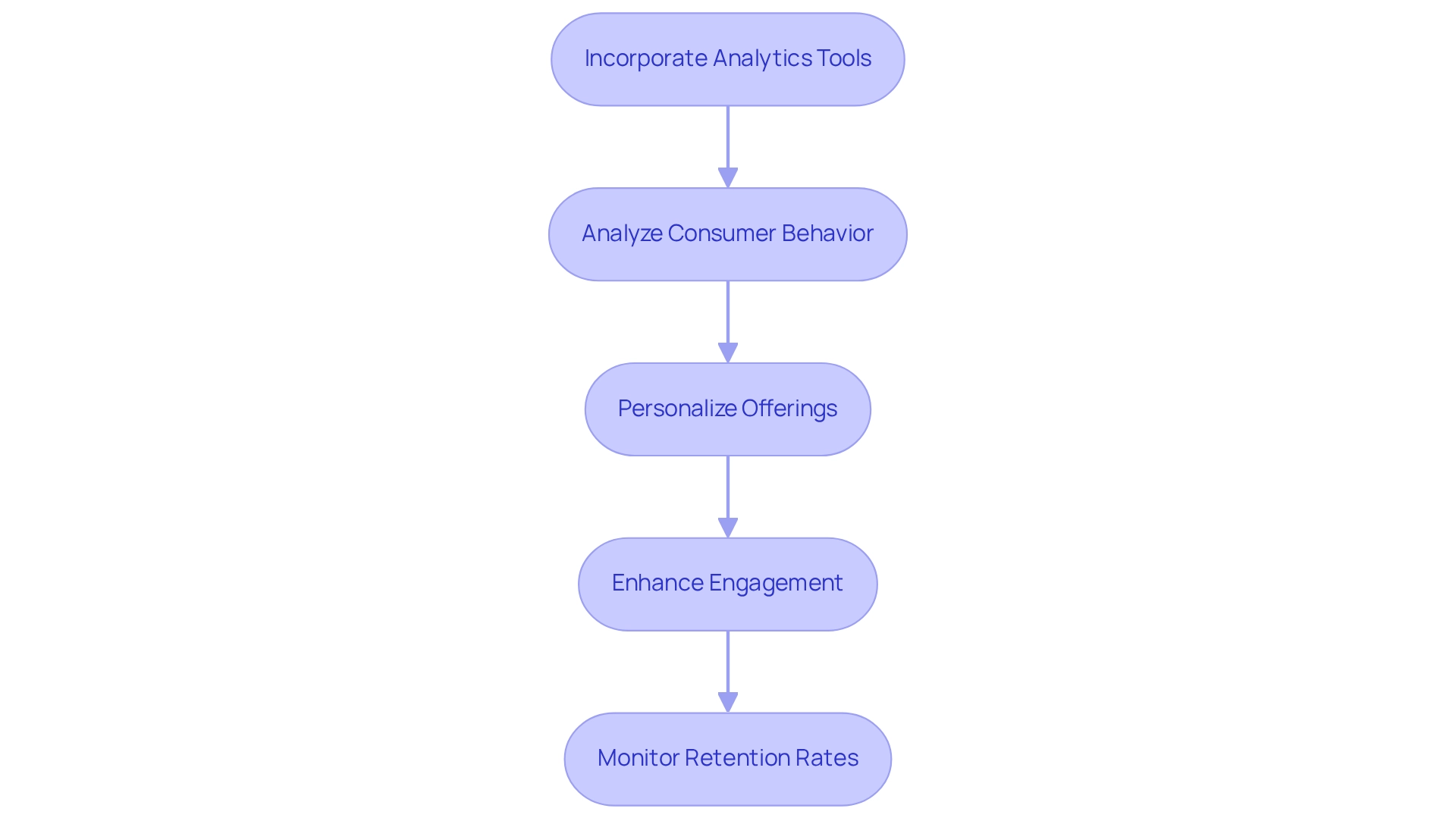
Social Media Integration: Amplifying User Engagement Through Sharing
Incorporating social media features into mobile applications revolutionizes how individuals share content with their networks, significantly boosting engagement and enhancing the app’s visibility. Features such as social sharing buttons and simplified login options empower users to promote the app while encouraging organic growth by attracting new participants.
Regular updates to sharing features can lead to a remarkable 20% increase in ongoing interactions as users explore new capabilities. Furthermore, we ensure 24/7 uptime for critical integrations, which is essential for maintaining the reliability of social media features in mobile apps.
Effective execution of these functionalities alleviates obstacles developers encounter, such as ensuring simplicity without overwhelming users, as highlighted in a case study addressing the challenges of applying social sharing functionalities. This approach not only enhances app virality but also positions the software advantageously in a competitive landscape, making it crucial for businesses aiming to maximize their reach and engagement in 2025.
Moreover, a survey by Sprout Social reveals that 52% of individuals are influenced by clear communication regarding rewards, underscoring the importance of effective communication in social sharing features.
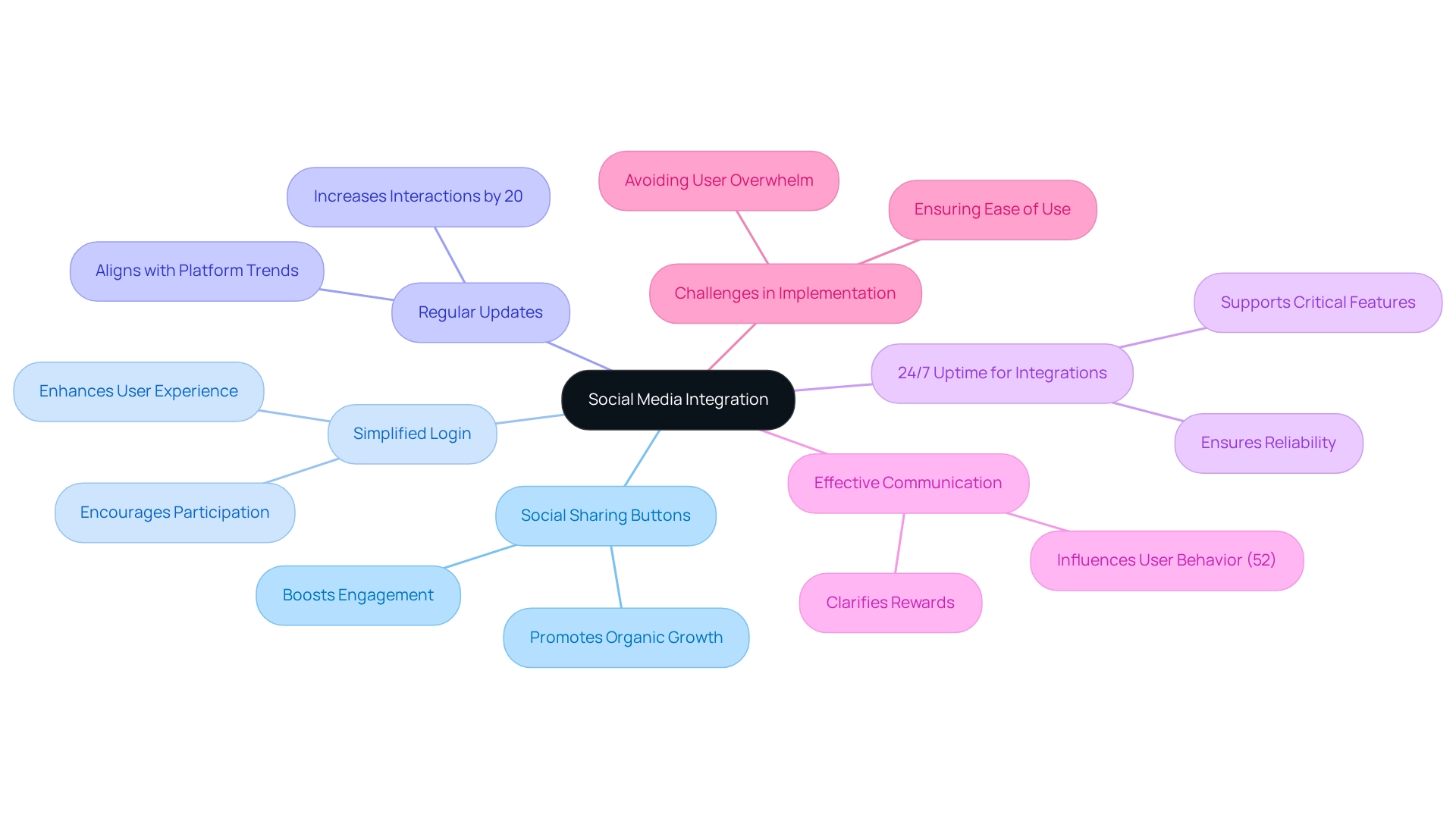
In-App Messaging: Fostering Community and Enhancing User Interaction
In-app messaging capabilities empower us to connect directly with our users within the application, fostering a vibrant community that significantly enhances engagement. By providing a dedicated space for individuals to share experiences, ask questions, and offer support, we create a more immersive and engaging environment. This approach not only boosts customer satisfaction but also encourages prolonged app usage, leading to higher interaction rates.
Furthermore, organizations that prioritize collaborative communication are five times more likely to achieve high performance, highlighting the critical role of community-building elements in applications. As we advance through 2025, the implementation of an integrated mobile app featuring advanced in-app messaging will be essential for promoting interaction and satisfaction, solidifying its status as a cornerstone of any effective mobile strategy.
Understanding the motivations of our users is vital for cultivating a thriving in-app community, as it allows us to tailor our messaging features to meet their needs effectively. Our commitment to 24/7 availability for essential integrations ensures that these messaging features remain reliable, further enhancing trust and engagement.
As Gustavo Estrada notes, we have streamlined complex projects and delivered results within preferred timelines and budget constraints, demonstrating how impactful in-app messaging can drive similar outcomes in customer interaction.
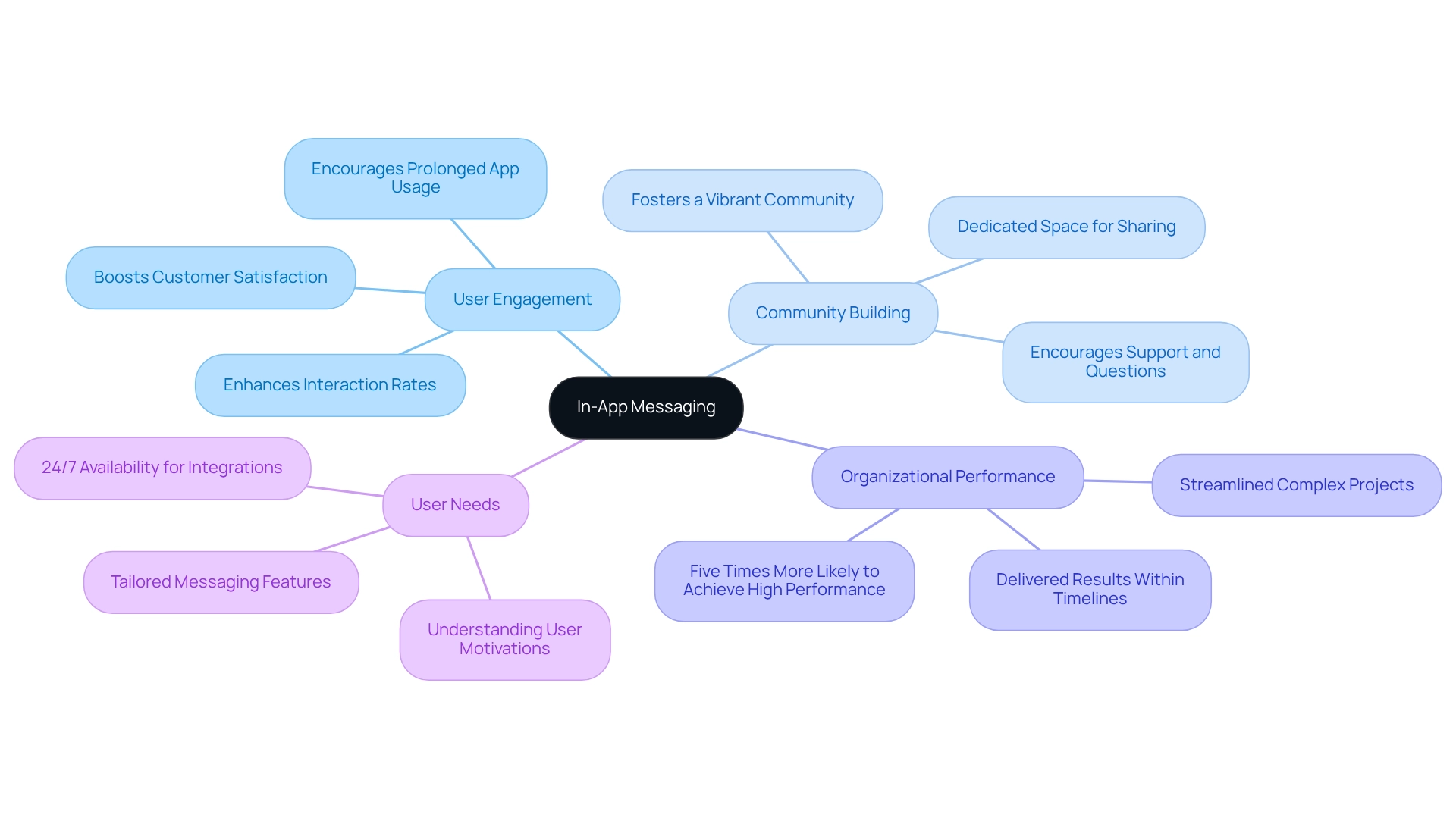
Gamification: Increasing User Engagement Through Interactive Experiences
Incorporating gamification features—such as points, badges, and leaderboards—into mobile applications can significantly enhance engagement. We understand that by rewarding participants for completing tasks or reaching milestones, we foster a more engaging and enjoyable experience. This approach not only encourages individuals to interact with the app more frequently but also cultivates a sense of accomplishment and community among participants.
Statistics reveal that the number of social media participants identifying as ‘gamers’ has surged by over 10 million, marking a 32% increase in just one year. This highlights the growing appeal of gamified experiences. Furthermore, the Scripps Research Institute’s innovative use of gamification in their research process through the interactive quiz ‘Dizeez’ attracted more contributors, demonstrating the effectiveness of gamification in engaging participants and fostering new data connections. Experts in game design suggest that the future of gamification will likely feature more advanced and customized solutions, enhancing participant retention and involvement.
We see examples such as Procter & Gamble, which has effectively leveraged AI in their gamified recruitment process, showcasing how gamification can be successfully applied in a corporate context. As the global retail sector rapidly evolves due to e-commerce, banking software can similarly utilize gamification to maintain competitive advantages. By integrating these elements, we can enhance user engagement in our integrated mobile app and create lasting connections with our audience.

Conclusion
At Avato, we recognize that enhancing user engagement is not just a goal; it is a necessity in today’s competitive landscape. Our hybrid integration platform emerges as a pivotal solution, seamlessly connecting disparate systems and empowering the development of mobile applications that meet user expectations. This unified approach significantly boosts user satisfaction, ensuring that users remain engaged and loyal.
The importance of real-time monitoring cannot be overstated. It allows us to maintain optimal app performance and promptly address any issues that may arise. Coupled with secure user authentication methods, we build trust, encouraging users to interact with our applications consistently. Furthermore, our personalization features and strategic push notifications create tailored experiences that resonate with users, driving higher engagement rates.
As mobile applications evolve, integrating offline functionality and analytics becomes crucial for maintaining user interest and satisfaction. These capabilities enhance usability and empower us to make data-driven decisions, elevating the overall user experience. Additionally, social media integration, in-app messaging, and gamification strategies amplify user interaction and community building, ensuring our applications remain relevant and engaging.
In summary, Avato’s hybrid integration platform stands out as an essential tool for businesses seeking to thrive in today’s competitive digital landscape. By focusing on seamless connectivity and user-centric features, we can significantly improve user engagement, satisfaction, and retention. Embracing these strategies will not only meet user demands but also foster long-lasting relationships with customers, securing a competitive edge for the future. Let us partner together to transform your user experience and drive sustained success.

